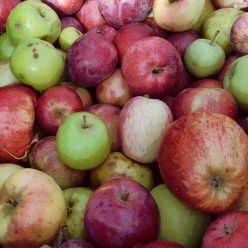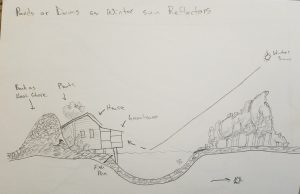Coming home to Washington after being on Maui for 5 weeks was harder than I imagined. While it provided me the opportunity return to Evergreen and to meet my fellow classmates, I couldn’t help but to feel a little lost that first week. I met some really great people while I was on the island, but what was I supposed to do now that I was back? How could I most rapidly apply the principles and knowledge that I had just received?
The answer came about mid-way through week 6 of the quarter. I received an email reminding me that I had to get prepared for the 10 apple trees I had ordered from Vashon Island Fruit Club, and I realized this would be a great opportunity to create a permaculture based design for my 1.25 acre lot in Seattle. I have been living here for about six months, six months less than the suggested minimum time for a designer to get to know the property they want to create a design for.
I am not creating an entire permaculture site design, but I can use the principles to create a guilded orchard in my back yard. I have observed and noted the topography of my back yard, and have decided to plant the trees in a way I believe will require little watering. We have a 750 sqft barn on the top of the hill in our back yard, which I plan to attach a 500 gallon tank to for irrigation. This tank, and the drip irrigation I will install, should provide enough water for me to keep the orchard happy while giving me some relief on my water bill.
I plan to install a Gaultheria Shallon, or Salal, patch on top of the hill in a shaded area. This patch is intended to be harvested and used as an additive to the cider I will make from the apple trees. I have also decided to incorporate the many roses in my yard in the orchard, because the rosehips will add a nice floral note to my ciders. Cowpeas will be used in the orchard for N fixation purposes, and because I think they’re tasty. Rounding out my guild, I will be utilizing the spruce trees around my property. They will provide wind protection, and I can also use the tips to spice up my ciders. The trees I will be receiving are as listed, with rootstock noted:

